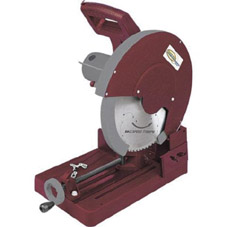 Whether or not a shop adopts dry metal cutting as a common practice depends on how the costs of doing without the benefits of cutting fluids compare to the costs of buying cutting fluids and maintaining and disposing of those fluids in compliance with environmental regulations. To calculate these costs, a shop must determine how well the workpiece, machine tool, and cutting tool can tolerate the heat and chips generated in a given dry-cutting operation.
Whether or not a shop adopts dry metal cutting as a common practice depends on how the costs of doing without the benefits of cutting fluids compare to the costs of buying cutting fluids and maintaining and disposing of those fluids in compliance with environmental regulations. To calculate these costs, a shop must determine how well the workpiece, machine tool, and cutting tool can tolerate the heat and chips generated in a given dry-cutting operation. Workpiece
Without the cooling effects of fluid, a metal cutting process may produce excessive heat that subjects the workpiece material to high stress and the danger of thermal expansion. However, for many work materials, properly performed dry cutting can expel the heat with the chip to avoid these adverse thermal effects on the workpiece. BUE is the main problem in the dry cutting of aluminum. By transferring all the heat generated in the cutting process to the chip, higher speeds can help eliminate aluminum's tendency to weld to the tool.Machine Tool
The workpiece material dictates whether or not a shop needs to purchase a machine tool specifically designed for dry cutting. To achieve the higher speeds and feeds that are typically used for the dry cutting of aluminum, the complete structure of the machine has to be designed for rigidity to accommodate the higher spindle-speed requirements. Cast iron and steel, on the other hand, can be dry milled or drilled with the machines already installed in most shops. Unlike aluminum, the dry cutting of cast iron or steel doesn't necessarily require higher spindle horsepower or greater machine rigidity. Since chip loads are about the same cutting dry as they are cutting wet, torque requirements and tool forces are also about the same. Although it isn't necessary to increase cutting parameters for cast iron or steel, higher spindle speeds and feeds may allow the chips to be ejected from the cutting zone before the heat can penetrate the workpiece or tool. Compressed-air or vacuum systems can blow or suck ferrous chips out of the cutting zone, but their effectiveness depends on controlled chip formation at the cutting tool. The configuration of the machine must enable proper chip collection and evacuation to prevent dry chips from accumulating and building up heat, which may cause thermal growth of the machine. Chip removal may be aided by a machine's chip-auger system. As long as you don't have large piles of chips sitting in any area of the machinSneakers













